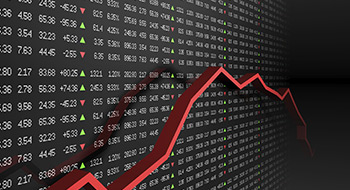
Global investors have significantly pared back U.S. equity allocations as belief grows that the U.S. Federal Reserve will raise rates in the second quarter, according to the BofA Merrill Lynch Fund Manager Survey for March.
A net 19% of global asset allocators are now underweight U.S. equities—the biggest underweight since January 2008 and a big swing from a net 6% overweight in February. The proportion of investors saying U.S. equities are overvalued has reached its highest since May 2000 at a net 23%.
Allocations to eurozone and Japanese equities have both increased, but investors have indicated that the shift to Europe has only just begun. A net 63% of respondents say Europe is the region they would most like to overweight in the coming 12 months—a record since the question was first asked in 2001. The reading has spiked from a net 18% preferring Europe in January.
Read: 7 forecasts for 2015
The move out of U.S. equities is also set to continue. A net 35% says that the U.S. is the region they would like to underweight the most, the most bearish reading in nearly 10 years. The spread between Europe and the U.S. has soared to 98 net percentage points—also a record.
The March survey indicates that investors have started to bring forward the date of the Fed’s first rate hike, rather than continue to push it back. The proportion of investors expecting the Fed to raise rates in the second quarter has risen to 34%, from 28%. The number expecting a rate rise in the third quarter has fallen. Accordingly, a net 2% of the panel has taken the view that the U.S. dollar is overvalued—the first overvalued reading since 2009.
“Investor consensus suggests that the strong dollar will act as positive rather than a negative for the global economy and markets,” says Michael Hartnett, chief investment strategist at BofA Merrill Lynch Global Research.
Read: Equities expected to outperform bonds
Investors’ expectations of higher inflation and higher interest rates have risen sharply, according to the survey. A net 52% of the panel expects high global consumer price inflation this month, up from a net 29% in February and a net 14% in January. Furthermore, increasing numbers take the view that global monetary policy could tighten. A net 34% say that policy is currently too stimulative, up from a net 26% a month ago.
More investors are forecasting increases in both long- and short-term interest rates. A net 66% of respondents believe short-term (three-month) rates will be higher in 12 months’ time, up from a net 53% in February. A net 63% expect long-term (10-year) rates in 12 months, up from a net 57%.
Investors inside Europe have echoed their global colleagues’ bullishness towards the region and made big allocations towards financial services. The proportion of European investors overweight banks has surged to a net 22%, from a net 26% underweight last month. The proportion of investors overweight insurance has risen to a net 31%, from a net 3% underweight in February
Read: A tactically cautious year ahead
Belief in a rebound in profits is strong. A net 38% of respondents to the regional survey say that they expect double-digit earnings growth in Europe in the next 12 months, up from just a net 3% in February and negative net 43% in January. A net 88% of the regional panel says that Europe’s economy will be stronger in a year’s time, up from 81% a month ago.
With questions hanging over China’s debt levels, concern of default has moved to the forefront of more investors’ minds. China debt defaults is now seen the second-largest tail risk in world markets—19% of investors rank it as their greatest risk, compared with 14% a month ago. “Geopolitical crisis” remains the most voted for tail risk.
Furthermore, the proportion of asset allocators underweight global emerging markets has risen to a net 11% from a net 1% in the past month. A net 57% of the global panel say that global emerging markets is the regional asset class they most want to underweight in the coming 12 months—down from a net 63% but remaining close to historic survey highs.
